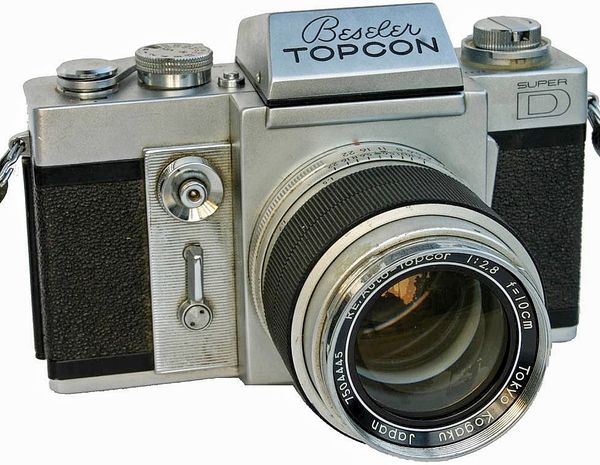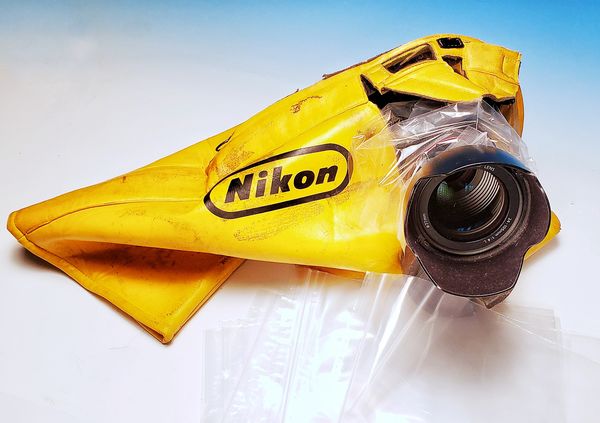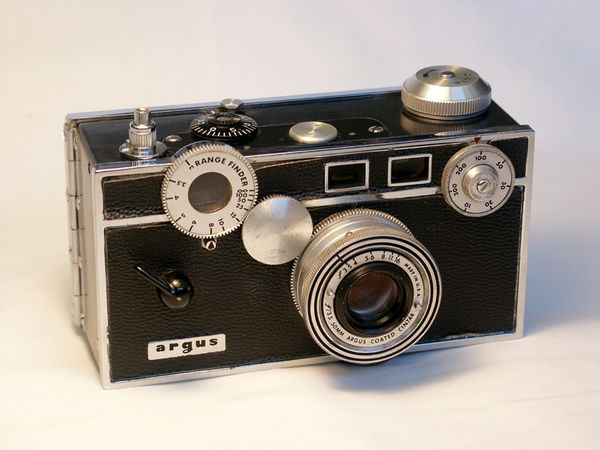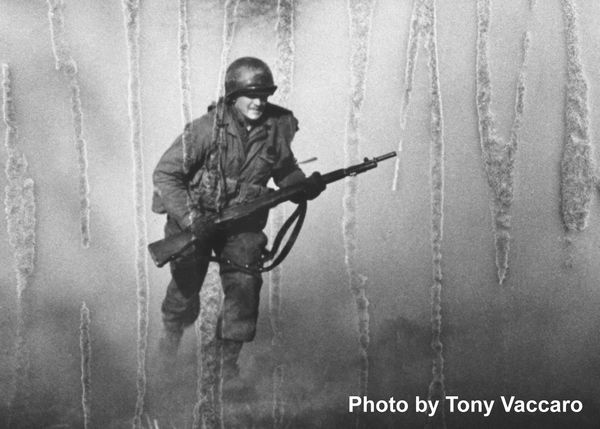repairing a soaked D810
Jul 7, 2019 09:59:10 #
billnikon wrote:
I never said he had special needs. I said as a special ed teacher, I understood him. Maybe you have a reading disability.
But, as a former special education teacher, I really understand him and his special needs."
Your statement.
Jul 7, 2019 10:08:13 #
I was on St. Paul Island that is part of the Pribilof Island chain in Alaska and there was no TV or radio in the hotel I was at. So I had no knowledge of the approaching mist front when we headed out to shoot flying puffins after dinner. When I left the house on the 4th to shoot fireworks the weather broadcast had a rain front 40 miles south. The forecast was partly sunny and dry for the evening.
Todays cameras are not really cameras they are hand held computers and they are full of circuit boards, computer tape circuits, etc. They do not have springs & gears that my FTN has. So putting it my car in the sun would not harm it. I do not appreciate the snarky comments of some, it shows their lack of knowledge on photography.
Todays cameras are not really cameras they are hand held computers and they are full of circuit boards, computer tape circuits, etc. They do not have springs & gears that my FTN has. So putting it my car in the sun would not harm it. I do not appreciate the snarky comments of some, it shows their lack of knowledge on photography.
Jul 7, 2019 10:15:00 #
tcthome wrote:
Slightly bulkier, Dominoes Pizza bag!
Good luck getting one of those into your pocket.
Jul 7, 2019 10:46:57 #
hj
Loc: Florida
Country Boy wrote:
Knowing how hot a car in the sun gets I would be more concerned about the excess heat damaging the electronics inside than the moisture. I have read a number of cases where IPhones or cameras were covered in a vat of dry rice and the rice absorbed the moisture and there is no heat applied. Before #3 happens, I would investigate the process you use. That said, if what you did worked who am I to say it was wrong.
I live in Florida and it's not unusual to get 130+ degrees in the car while it sits. I keep a Canon Elph 330HS in the car at all times for those unexpected moments. The camera always works... no problems from the heat. Of course, when I'm using the camera the AC is on so the camera temperature has returned to a respectable level. For what it's worth I will repeat as I have posted before, the Canon Elph 330HS is the best small point and shoot ever and also has 10X zoom. I Love it and find it's pics often rival the photos from my other 5 more expensive cameras. I like it SO MUCH I bought another one in mint condition in case this one bites the dust.
Jul 7, 2019 10:58:54 #
Scruples wrote:
I fail to see the need for photographers to be mean to each other. I thought the mission of this forum was to share our experiences. Perhaps that little piece of information has alluded many. Please ignore the offensive and obnoxious and let's get back to being photographers.
YES PlEASE
Jul 7, 2019 11:32:35 #
billnikon
Loc: Pennsylvania/Ohio/Florida/Maui/Oregon/Vermont
traderjohn wrote:
But, as a former special education teacher, I really understand him and his special needs."
Your statement.
Your statement.
Everyone I know has "special needs". It means what it means, and that is all.
Jul 7, 2019 12:20:09 #
billnikon wrote:
Everyone I know has "special needs". It means what it means, and that is all.
Wait a minute let me look for my boots. That is not what you meant and you know it.
Say goodbye ....we are done.
Jul 7, 2019 13:27:13 #
Jul 7, 2019 15:09:38 #
hj
Loc: Florida
Gene51 wrote:
Ikea sells 6L zip lock bags, but I always carry a kitchen trash bag just in case. The take up little room and are big enough to cover up a full frame camera and a long lens. The other bag that works in a pinch is a grocery store produce bag - the kind that you either twist and knot or use a twist tie to close. Those that come large enough for leafy greens are best - and they are free!
Those produce bags are made available to put fruit and vegetables in them. I assume you aren't taking "free" multiple bags for your personal miscellaneous uses.
Jul 7, 2019 15:59:47 #
hj wrote:
Those produce bags are made available to put fruit and vegetables in them. I assume you aren't taking "free" multiple bags for your personal miscellaneous uses.
Those produce bags are so thin, they will tear if you catch a fingernail on them.
>Alan
Jul 7, 2019 16:41:36 #
I now have a zip lock Hefty 2.5 gal bag that I'll keep on my baby buggy that I use to transport photo gear and a cooler. I have a garbage bag in the lid of my 200-500 case and I have a Lens Coat raincoat for my 600 that's clipped to its tripod and I have a rain suit for me so now I'm covered.
Jul 7, 2019 17:49:01 #
Sorry to see all the rancor and a little bit of silliness again but I suppose it comes with the territory. Sady, I have come to expect it.
So...accidents and mistakes happen and equipment gets compromised- it happens to the best of us. My experience is that most cameras can stand a bit of inclement weather and/or extreme conditions, however, if you are constantly working in "hostile" conditions, some of y'all may want into special winterizing, and/or tropical conditions which include special lubricants, weather sealing, etc. There are special underwater housings!
Obviously, you don't need to be an electronics engineer or an aerospace scientist to understand that water, salt, extreme heat, and humidity do not mix well with electronics. Nor does sand, grit, dirt, airborne particles, and other such perils are welcomed in the mechanical aspects of your cameras. So..if you are gonna go out in any of these environments you must understand the tolerances as per temperature and moisture and the extent to which your present is seal against some or any of these potentially harmful invaders.
From my "press" days, I quickly learned, usually from bad experiences, to take simple precautions for unexpected weather or environmental conditions. So, my kit contains a rain poncho (for me and the cameras), plastic bags and plenty of rags.
I covered parts of two Olympic Games, up here in Canada, and the nice folks at Nikon, who made available a pool of equipment like 1200mm lenses for us poorer pros, gifted me with the yellow bag shown in the attached image. It goes wherever I go out-of-doors and on construction and industrial assignments and has saved my cameras' skin many times. The polyethylene bags and rubber bands work fine for additional protection. Non of this is tantamount to "Mil-Spec" or the use of an underwater housing or other specialized protectional hardware.
Common sense folks- All of this prevention and cure is great but it ain't gonna help you in a tsunami, a hurricane, or if you drop your gear into the sea, quicksand, down a well, or if you carry it through a mudslide- or if it is exposed to extreme heat, humidity or freezing cold and sustains damage or malfunctions. If any of that happens, don't write about it but immediately get it to an honest, reputable and authorized repair service and find out whether the repair is possible or economically sound. Even if it still works, an examination is in order.
Most of the photographic equipment we purchase through normal sources and use is NOT "MIL-SPEC". My actual military experience is with aerial cameras and other specialized surveillance and cartographic gear. Most of that stuff is custom manufactured or especially and extremely reinforced and ruggedized and even so, some of it fails in extreme circumstances. Back in the day (the 1960s), the U.S. Armed Services adopted the Bessler Topcon as its official 35mm general usage combat camera. Seems it was mechanically superior and more moisture/water resistant than its competitors. It won over the Nikon and others and was in service into the 1980s. A Navy photographer I worked with told me the salt air finally got into his Topcon kit and he was on his third camera. Ain't nothin' that's indestructible!
So folks...be nice to each other. Unless you are goi into extreme environments, plastic bags are rubber bands will do- you don't need the kind plastic they use to insulate walls or wrap homes in before the install the siding- It's too heavy and not flexible enough to conform to the gear.
Another little tip- If you take you larger flash gear on location, apply a little WD-40, with a Q-tip, to the male a female connector that runs from the power pack to the lamp head or monolight. The "WD" stands for "Water Displacement" and this will prevent moisture from causing problems. Obviously, don't use that kinda gear in the rain- if it starts raining, turn it off, cover it up and get it out of there. Shoe mount Speedlights can benefit for that treatment as well if they are gonna be used for flash fill in damp out-of-doors locations- apply the WD-40 to the foot VERY SPARINGLY and then wipe it off. Never use WD-40 on a camera!
And y'all- if you hurt yourselves, feel especially ill, or accidentally expose yourself to something toxic, do not post your symptoms or issues on UHH- please see a doctor! I know that a few of y'all say nasty things, but I don't want to read about your untimely demise in the papers!
Attached- the Topcon- a "tank" of a camera. The don't make 'em dat way anymore!


So...accidents and mistakes happen and equipment gets compromised- it happens to the best of us. My experience is that most cameras can stand a bit of inclement weather and/or extreme conditions, however, if you are constantly working in "hostile" conditions, some of y'all may want into special winterizing, and/or tropical conditions which include special lubricants, weather sealing, etc. There are special underwater housings!
Obviously, you don't need to be an electronics engineer or an aerospace scientist to understand that water, salt, extreme heat, and humidity do not mix well with electronics. Nor does sand, grit, dirt, airborne particles, and other such perils are welcomed in the mechanical aspects of your cameras. So..if you are gonna go out in any of these environments you must understand the tolerances as per temperature and moisture and the extent to which your present is seal against some or any of these potentially harmful invaders.
From my "press" days, I quickly learned, usually from bad experiences, to take simple precautions for unexpected weather or environmental conditions. So, my kit contains a rain poncho (for me and the cameras), plastic bags and plenty of rags.
I covered parts of two Olympic Games, up here in Canada, and the nice folks at Nikon, who made available a pool of equipment like 1200mm lenses for us poorer pros, gifted me with the yellow bag shown in the attached image. It goes wherever I go out-of-doors and on construction and industrial assignments and has saved my cameras' skin many times. The polyethylene bags and rubber bands work fine for additional protection. Non of this is tantamount to "Mil-Spec" or the use of an underwater housing or other specialized protectional hardware.
Common sense folks- All of this prevention and cure is great but it ain't gonna help you in a tsunami, a hurricane, or if you drop your gear into the sea, quicksand, down a well, or if you carry it through a mudslide- or if it is exposed to extreme heat, humidity or freezing cold and sustains damage or malfunctions. If any of that happens, don't write about it but immediately get it to an honest, reputable and authorized repair service and find out whether the repair is possible or economically sound. Even if it still works, an examination is in order.
Most of the photographic equipment we purchase through normal sources and use is NOT "MIL-SPEC". My actual military experience is with aerial cameras and other specialized surveillance and cartographic gear. Most of that stuff is custom manufactured or especially and extremely reinforced and ruggedized and even so, some of it fails in extreme circumstances. Back in the day (the 1960s), the U.S. Armed Services adopted the Bessler Topcon as its official 35mm general usage combat camera. Seems it was mechanically superior and more moisture/water resistant than its competitors. It won over the Nikon and others and was in service into the 1980s. A Navy photographer I worked with told me the salt air finally got into his Topcon kit and he was on his third camera. Ain't nothin' that's indestructible!
So folks...be nice to each other. Unless you are goi into extreme environments, plastic bags are rubber bands will do- you don't need the kind plastic they use to insulate walls or wrap homes in before the install the siding- It's too heavy and not flexible enough to conform to the gear.
Another little tip- If you take you larger flash gear on location, apply a little WD-40, with a Q-tip, to the male a female connector that runs from the power pack to the lamp head or monolight. The "WD" stands for "Water Displacement" and this will prevent moisture from causing problems. Obviously, don't use that kinda gear in the rain- if it starts raining, turn it off, cover it up and get it out of there. Shoe mount Speedlights can benefit for that treatment as well if they are gonna be used for flash fill in damp out-of-doors locations- apply the WD-40 to the foot VERY SPARINGLY and then wipe it off. Never use WD-40 on a camera!
And y'all- if you hurt yourselves, feel especially ill, or accidentally expose yourself to something toxic, do not post your symptoms or issues on UHH- please see a doctor! I know that a few of y'all say nasty things, but I don't want to read about your untimely demise in the papers!
Attached- the Topcon- a "tank" of a camera. The don't make 'em dat way anymore!




Jul 7, 2019 18:33:03 #
E.L.. Shapiro wrote:
Sorry to see all the rancor and a little bit of si... (show quote)
Reminds me of the Argus C-3.
From Wikipedia:
The Argus C3 was a low-priced rangefinder camera mass-produced from 1939 to 1966 by Argus in Ann Arbor, Michigan, United States. The camera sold about 2 million units, making it one of the most popular cameras in history. Due to its shape, size, and weight, it is commonly referred to as "The Brick" by photographers (in Japan its nickname translates as "The Lunchbox"). The most famous 20th-century photographer who used it was Tony Vaccaro, who employed this model during World War II.
>Alan


Jul 7, 2019 21:01:17 #
Kaib795
Loc: Maryland, USA
E.L.. Shapiro wrote:
Sorry to see all the rancor and a little bit of si... (show quote)
Your Topcon reminds me of my first 35mm camera, a Nikon F. It was one tough camera I bought used with a 28mm, 50mm, 105mm and a 135mm lens set.
Jul 7, 2019 21:10:01 #
Kaib795
Loc: Maryland, USA
Gene51 wrote:
Ikea sells 6L zip lock bags, but I always carry a kitchen trash bag just in case. The take up little room and are big enough to cover up a full frame camera and a long lens. The other bag that works in a pinch is a grocery store produce bag - the kind that you either twist and knot or use a twist tie to close. Those that come large enough for leafy greens are best - and they are free!
Funny that I grabbed just that, a kitchen white trash bag and headed out with tripod and a large bucket of gear. LOL It was to rain but I thought that getting the shot would be fast and easy. It was and got out of there before the rain dumped but it's always good to be ready. All that was needed was to cover the bucket with the trash bag and relax. The tripod can get wet. Easy if you have the boy scout mentality.
If you want to reply, then register here. Registration is free and your account is created instantly, so you can post right away.


